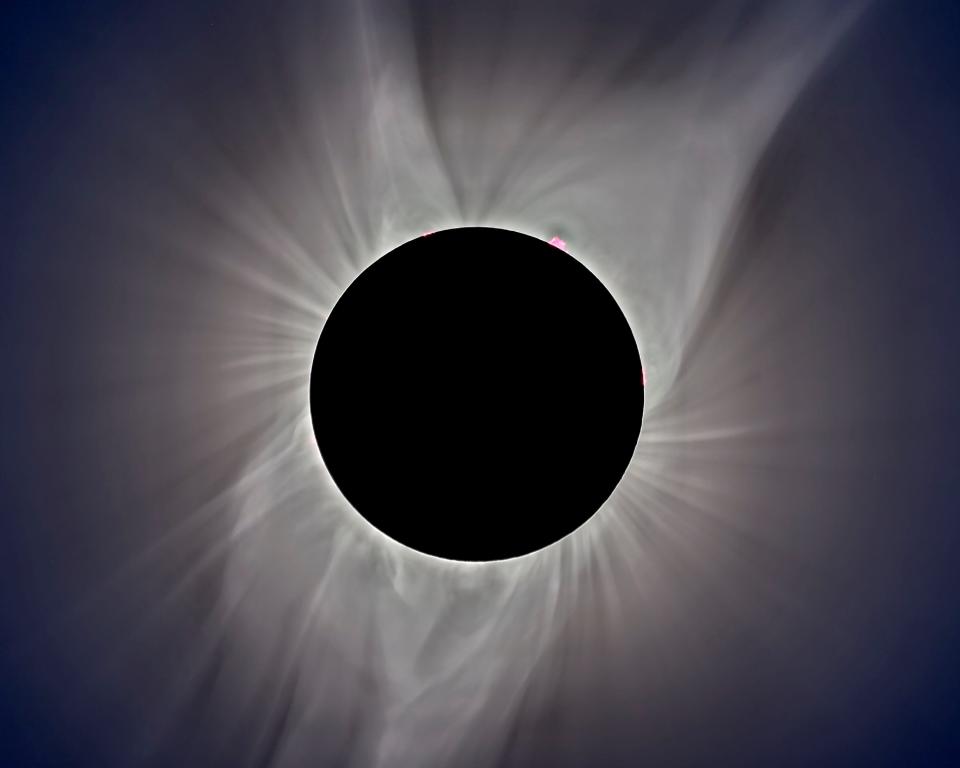The April total solar eclipse could snarl traffic for hours across thousands of miles
Editor's note: An updated cloud forecast for the April 2024 total solar eclipse is in. Read the latest eclipse forecast and news as of Wednesday, April 3.
Millions of Americans will be looking to the sky during a rare total solar eclipse on April 8, and experts warn the excitement could create dangerous and busy traffic conditions as people pack into the narrow band of the country with the best view.
"Pack your patience, whether traveling a great distance or locally. People will be out and about to catch a glimpse of the eclipse," said Aixa Diaz, a spokesperson for the American Automobile Association.
Roads could be especially packed at the center of the eclipse's path as Americans who want the best view crowd into cities, towns and remote areas that don't have the infrastructure to handle crowds.
A similar scenario played out in 2017 during the nation's last total solar eclipse: Congestion in some areas lasted for up to 13 hours after totality, according to Transportation Research News, a National Research Council publication. An analysis of traffic patterns from that year suggests the worst of the traffic – on interstates and rural back roads alike – will kick off after the eclipse ends and everyone tries to leave all at once.
This year, in Ohio's Lorain County, authorities are warning residents to expect an increase in visitors, traffic and jammed roads – and possible cellphone signal drops.
“What we could have is crowds here that we’re not used to,” wrote Dave Freeman, director of Lorain County Emergency Management. “We’re not set up infrastructure-wise for that. We don’t have the roads.”
Eclipse forecast: Will the 2024 eclipse still look good if it's cloudy? What to know about cloud forecasts.
Where will traffic be the worst during the 2024 total solar eclipse?
Roads in states where skygazers will travel to see full totality will be the most prone to traffic jams.
Even though Oklahoma has only a small corner of the state in the path of totality, the state "is expected to receive an influx of anywhere from 17,000 to 66,000 visitors to watch the solar eclipse," reads an announcement from Oklahoma Highway Patrol. "The large influx of visitors to southeastern Oklahoma could overwhelm and back up the area's road systems," including two-lane highways passing through small towns.
Authorities advise residents that hotels and visiting areas will be at maximum capacity, traffic will be heavy and deliveries may be delayed.
The last total solar eclipse snarled US traffic
Wyoming Department of Transportation spokesman Doug McGee said more than 536,000 cars filled the state's streets after the eclipse in 2017, and the state highway system "was taxed like it’s never been before," The Denver Post reported.
And "travel from Casper, Wyoming, to Denver, Colorado – normally a 4-hour trip – took 10 hours or more," according to an analysis of traffic from Transportation Research News.
Analysis author Jonathan Upchurch said most skygazers traveled to the paths of totality by car, "roadways experienced very little traffic congestion on the days leading up to totality," and "almost every Interstate route passing through the path of totality showed red on Google Traffic maps" after the eclipse reached totality.
The 2017 traffic followed warnings from officials.
Be careful if you're driving during the eclipse
Texas state officials also warning drivers to "be on alert for distracted pedestrians looking to the sky." They also say drivers should not wear eclipse glasses, which block out most light, while driving.
What time is the solar eclipse? Search your ZIP code for a viewing guide
Authorities there and elsewhere along the line of totality are recommending drivers keep their headlights on, be mindful of pedestrians and even stock up on essentials like fuel and food ahead of the eclipse.
AAA, which insures drivers across the country, also is warning people that skygazers will be on the roads. They recommend drivers put their sun visors in their cars down to block their view of the sun and watch closely for pedestrians.

How should Americans prepare for traffic jams?
AAA and the Oklahoma Highway Patrol suggest several ways Americans can prepare for traffic jams related to the eclipse:
Plan ahead so you don't have to travel for errands or appointments around when the eclipse is happening.
Don't pull over to the side of a road or highway to view the eclipse. Find a parking area instead.
Fuel up before the eclipse and have some essentials on hand while traveling.
When and where can you view the 2024 total solar eclipse?
A total solar eclipse happens when the moon blocks the sun's light, leading to a period of partial or full darkness on Earth.
The path of totality, where the sun is fully blocked, in the U.S. begins in Texas. The eclipse begins around 1:27 p.m. local time.
Cities on the centerline include Dallas, Cleveland and Buffalo, New York.
Contributing: Ashley May, Janet Loehrke, Ramon Padilla and Ahjane? Forbes
Contact Kayla Jimenez at [email protected]. Follow her on X at @kaylajjimenez.
This article originally appeared on USA TODAY: The April total solar eclipse will create dangerous, crowded traffic
